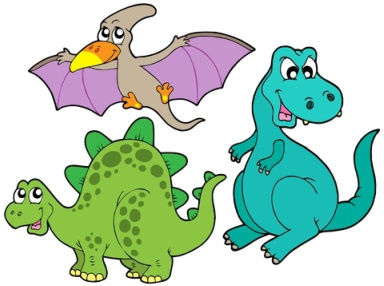Around 231.4 million years ago, a diverse group of terrestrial vertebrates, called Dinosaurs, first appeared on the earth. Dinosaurs were the dominant land animals for around 135 million years, from the beginning of the Jurassic (about 201 million years ago) until the end of the Cretaceous(66 million years ago), when the Cretaceous–Paleogene extinction event led to the extinction of most dinosaur groups at the close of the Mesozoic Era.
Dinosaurs, the name translated as ‘terrible or wondrous lizards’, certainly evolved in a diverse range of sizes and shapes. They sported an impressive array of body modifications including horns, scales and crests. The evidences of their existence, appearance, living habit, and other features are mainly from the investigation of fossils.
General Introduction of Dinosaurs
Living Condition & Diets
Millions of years ago, except for dinosaurs, on land, there were plants like conifers, cycads and ferns. Besides that, insects and Mesozoic Mammals were also abundant. In the sky, prehistoric birds or pterosaurs flying. Fish and Marine Reptiles occupied the sea. All these had provided a rich menu for the dinosaurs.
Classification of Dinosaurs (Diet-based)
Based on the diet, dinosaurs can be categorized into three types:
Herbivores, Carnivores and Omnivores
Herbivores, or plant eaters, are dinosaurs which ate plants, leaves, fruits, grass and flowers. Anything green was considered meals for these dinosaurs.
Carnivores, or meat eaters, ate other dinosaurs and other types of animals.
Omnivores ate both plants and animals.
Among all the three types, omnivores were the fewest in number. Thus, we will focus on distinguishing between the Herbivores & Carnivornes.




Herbivore: Tanystropheus
Carnivore: Tyrannosaurus
Reading Material:
Backgournd Information of Dinosaurs
